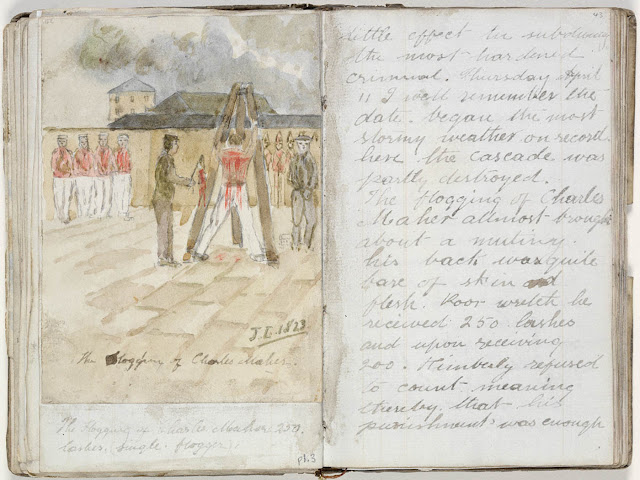William was released after serving his full sentence June 1838.
There has always been talk (family talk that is) that when William was released from his term that he joined a bushwhackers gang..Is there any truth to this?, I have no idea ..all we have to go on his oral history so I will assume that somewhere in his stories William relaid to his family his stint as a bushwhacker but it cannot have been for long because he was back on the high seas again Whaling
There has always been talk (family talk that is) that when William was released from his term that he joined a bushwhackers gang..Is there any truth to this?, I have no idea ..all we have to go on his oral history so I will assume that somewhere in his stories William relaid to his family his stint as a bushwhacker but it cannot have been for long because he was back on the high seas again Whaling
In the 1830s, the revenue from whale exports was greater than any other produce from Van Diemen's Land.
In Otago Harbour the Weller brothers, like many early
whalers originating in and financed from Sydney, established
a station in 1831 called Otago (present-day Ōtākou). In 1835
the 85 men there killed 103 whales, producing 260 tuns
(248,300 litres) of oil – despite competition from foreign
bay whalers. Like other stations which survived for any time,
Ōtākou doubled as a trading centre purchasing potatoes, pigs
and flax from Māori for sale to Sydney merchants. But it was
a precarious existence, and as catches declined in one area a
new station would be established elsewhere. In 1841 Ōtākou
closed after producing only 10 tuns (9,550 litres) of oil
that year.
https://teara.govt.nz/en/whaling/print
The death rate among whalers was reportedly "huge".
The job of a whaler was dangerous and disgusting — with crews of men braving the southern ocean in tiny, wooden boats to pursue the enormous animals.

























